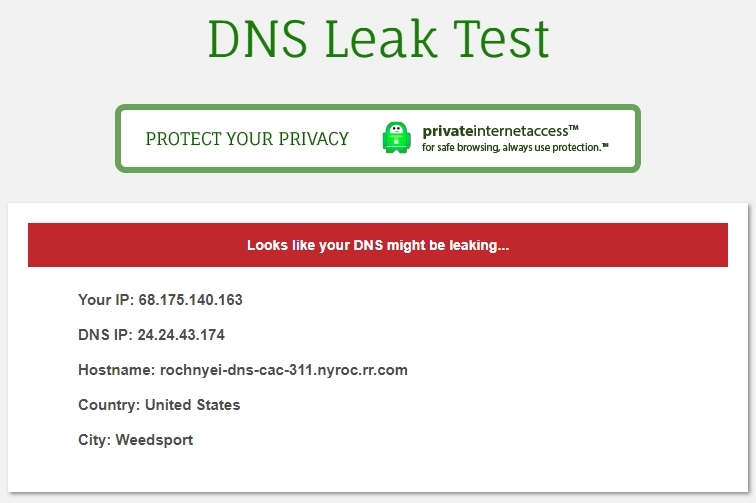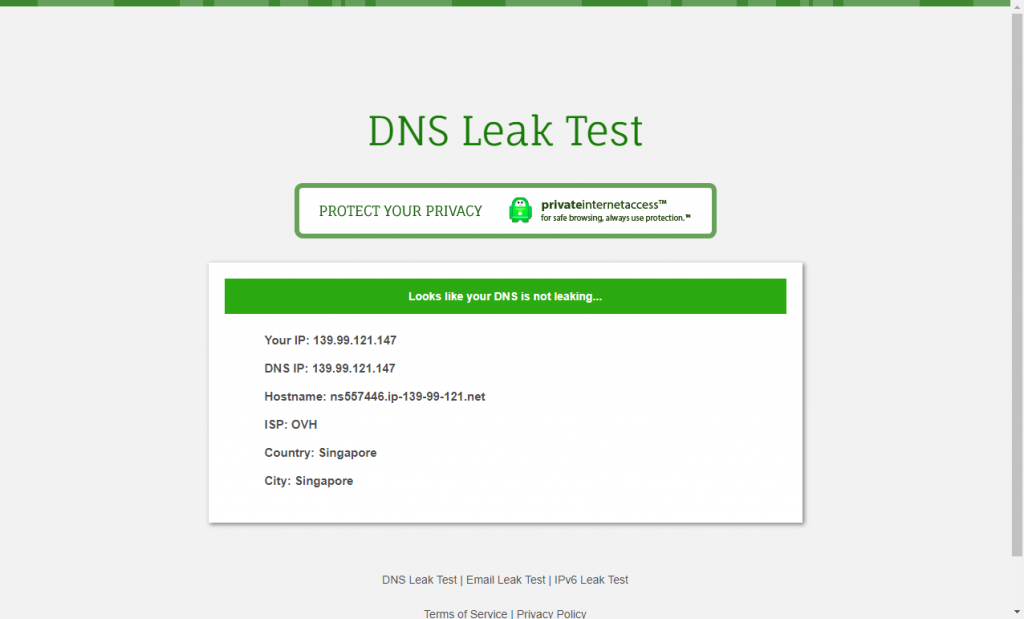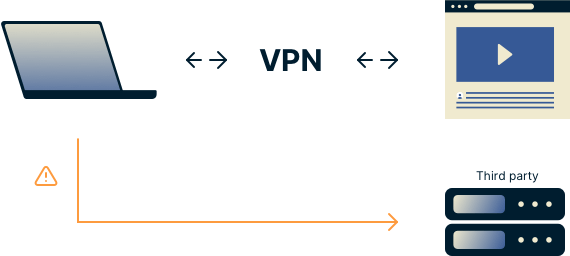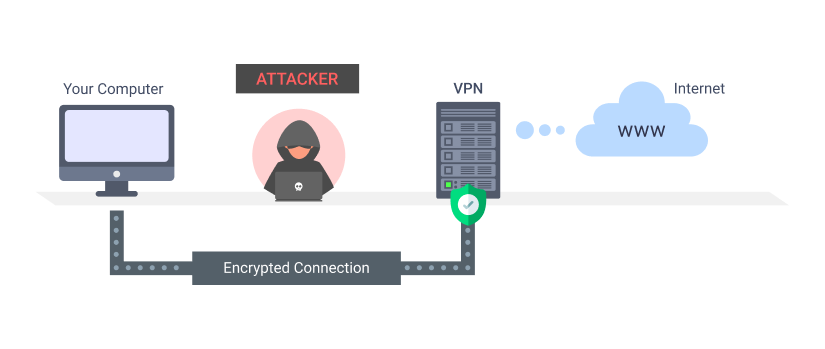Test VPN For Leaks
In this article, we’ll be exploring the topic of testing VPNs for leaks. Whether you’re a beginner or an advanced user, it’s important to understand the potential vulnerabilities that can arise when using a VPN. We’ll discuss why testing for leaks is crucial, the different types of leaks to be aware of, and provide practical tips on how to effectively test your VPN’s security. By the end of this article, you’ll have a better understanding of how to ensure your VPN is providing you with the privacy and security you need. So let’s dive in and uncover the world of VPN leaks.
1. Understanding VPN Leaks
1.1 What are VPN leaks?
When you connect to a Virtual Private Network (VPN), you expect your internet traffic to be encrypted and your online activities to be completely private. However, there is a potential vulnerability that can compromise the security provided by your VPN – VPN leaks. A VPN leak occurs when your real IP address or other sensitive information is exposed, leaking through the VPN’s encryption.
VPN leaks can happen due to various reasons, such as misconfigurations, software bugs, or incompatible settings. It is crucial to understand different types of VPN leaks and how to identify and mitigate them to ensure your online privacy and security.
1.2 Importance of testing VPN for leaks
Testing your VPN for leaks is crucial to ensure that your online activities remain private and secure. VPNs are widely used for various purposes, such as protecting personal information, bypassing geo-restrictions, and enhancing online anonymity. However, if your VPN leaks your real IP address or DNS queries, it can expose your identity and compromise the very purpose of using a VPN.
Regularly testing your VPN for leaks allows you to identify any vulnerabilities or misconfigurations that may be present. By detecting and addressing these leaks, you can enhance the effectiveness of your VPN and ensure that your online activities remain protected.
2. Types of VPN Leaks
2.1 DNS leaks
DNS (Domain Name System) leaks occur when your computer or device bypasses the VPN’s encrypted tunnel and sends DNS queries directly to your Internet Service Provider (ISP) or third-party DNS servers. This can potentially expose the websites you visit and your online activities.
2.2 IP leaks
IP (Internet Protocol) leaks happen when your real IP address is visible to websites or online services, bypassing the anonymity provided by your VPN. This can occur due to misconfigurations, network vulnerabilities, or software bugs.
2.3 WebRTC leaks
WebRTC (Web Real-Time Communication) leaks occur when your real IP address is disclosed through the WebRTC protocol, which is used for real-time communication within web browsers. This can happen even when you are connected to a VPN, potentially exposing your true location.
2.4 IPv6 leaks
IPv6 (Internet Protocol version 6) leaks occur when your VPN fails to properly handle IPv6 traffic, leading to the exposure of your real IPv6 address. If your VPN only supports IPv4, but your device is configured to use IPv6, your real IP address could be leaked.
3. Identifying VPN Leaks
3.1 Testing for DNS leaks
To test for DNS leaks, you can make use of specific tools and websites that check if your DNS queries are bypassing the VPN. These tools will analyze your internet traffic and determine if your DNS requests are going through the secure VPN tunnel or being sent directly to your ISP’s DNS servers.
3.2 Checking for IP leaks
Checking for IP leaks involves verifying if your real IP address is visible to websites or online services. You can use tools and websites that display your IP address when connected to a VPN to determine if any leaks are present. These tools will help you identify if your VPN is effectively masking your IP address.
3.3 Detecting WebRTC leaks
Detecting WebRTC leaks requires testing your browser’s WebRTC functionality to see if it is leaking your real IP address. There are specific websites and tools available that perform WebRTC leak tests, checking if your IP address is visible through WebRTC communication.
3.4 Verifying IPv6 leaks
To verify if your VPN is leaking IPv6 traffic, you can use dedicated websites and tools that check if your IPv6 address is exposed when connected to the VPN. These tests ensure that your IPv6 traffic is properly handled by your VPN to prevent any potential leaks.
4. Tools for Testing VPN Leaks
4.1 VPN leak testing websites
Several websites offer VPN leak testing services that help identify DNS leaks, IP leaks, WebRTC leaks, and IPv6 leaks. These websites allow you to analyze your internet traffic and provide insights into any potential leaks. Some popular VPN leak testing websites include DNSLeakTest.com, IPLeak.net, and browserleaks.com.
4.2 VPN leak testing software
Apart from online tools, there are also dedicated software applications available to test for VPN leaks. These software solutions offer more advanced features and comprehensive testing options. Some notable VPN leak testing software options include Wireshark, IPLeak, and DNS Leak Test.
4.3 Browser extensions for leak testing
Browser extensions offer a convenient way to test for VPN leaks directly from your web browser. These extensions usually provide quick access to DNS leak tests, IP leak tests, and WebRTC leak tests. Examples of such browser extensions include WebRTC Leak Prevent, DNS Leak Test, and IPLeak.
5. Conducting DNS Leak Tests
5.1 Using DNS leak testing websites
To conduct a DNS leak test, you can visit DNS leak testing websites such as DNSLeakTest.com or IPLeak.net. These websites will analyze your DNS queries and determine if they are bypassing the VPN tunnel. The test results will indicate whether your DNS requests are leaking or being properly routed through the VPN.
5.2 Performing DNS leak tests via command line
If you prefer command line tools, you can perform DNS leak tests using utilities like nslookup or dig. These tools allow you to manually query DNS servers and check if your requests are going through the VPN or being sent directly to your ISP. By comparing the results with and without the VPN connection, you can identify any potential DNS leaks.
5.3 Interpreting DNS leak test results
When interpreting DNS leak test results, you should ensure that all DNS servers listed are associated with your VPN service and not your ISP or other third-party providers. If any DNS servers are detected that are not related to your VPN, it indicates a DNS leak. On the other hand, if all the listed DNS servers are from your VPN service, it suggests that your DNS queries are properly protected.
6. Performing IP Leak Tests
6.1 IP leak test websites
To perform an IP leak test, you can visit IP leak testing websites like IPLeak.net or browserleaks.com. These websites will display your IP address and associated information when connected to a VPN. If your real IP address is visible, it indicates an IP leak, and you should investigate the issue further.
6.2 Using VPN leak testing software for IP leakage
VPN leak testing software like Wireshark or IPLeak provides advanced options to analyze your network traffic and detect IP leaks. By capturing and analyzing packets sent and received during a VPN session, these tools can determine if your real IP address is being exposed to websites or online services.
6.3 Analyzing IP leak test outputs
When analyzing IP leak test outputs, it is essential to compare the displayed IP address with your actual IP address. If the displayed IP address is different from your real IP address, it indicates that your VPN is effectively masking your IP, and there are no leaks present. However, if the displayed IP matches your real IP, it suggests the presence of an IP leak, and you should take necessary measures to address it.
7. Detecting WebRTC Leaks
7.1 WebRTC leak testing websites
To detect WebRTC leaks, you can visit dedicated websites such as browserleaks.com or doileak.com. These websites perform WebRTC leak tests and display your IP address obtained through WebRTC. If your real IP address is visible, it indicates a WebRTC leak, which requires further investigation and mitigation.
7.2 Utilizing VPN leak testing software to identify WebRTC leaks
VPN leak testing software, including Wireshark and IPLeak, can also help identify WebRTC leaks. These tools analyze network traffic and capture WebRTC-related packets to determine if your real IP address is exposed through WebRTC communication.
7.3 Understanding WebRTC leak test reports
WebRTC leak test reports from websites or testing software will clearly state whether a leak has been detected or not. If your real IP address is visible in the report, it signifies a WebRTC leak. For optimal privacy and security, it is essential to address any identified leaks to prevent potential exposure of your real IP address.
8. Verifying IPv6 Leaks
8.1 IPv6 leak testing websites
To verify IPv6 leaks, you can use IPv6 leak testing websites such as browserleaks.com or test-ipv6.com. These websites evaluate whether your IPv6 traffic bypasses the VPN tunnel and reveal your real IPv6 address. If IPv6 leaks are detected, appropriate measures should be taken to rectify the issue.
8.2 Testing IPv6 leakage with VPN leak testing software
VPN leak testing software, such as Wireshark or IPLeak, can be used to test for IPv6 leaks as well. These tools capture and analyze network packets to determine if your IPv6 address is exposed when connected to a VPN. By inspecting the captured packets, you can identify if the VPN properly handles IPv6 traffic.
8.3 Interpreting IPv6 leak test outcomes
Interpreting IPv6 leak test outcomes involves checking whether your real IPv6 address is visible in the test results. If the displayed IPv6 address matches your actual IPv6 address, it suggests an IPv6 leak. On the other hand, if the displayed IPv6 address is different from your real IPv6 address, it signifies that your VPN is effectively protecting your IPv6 traffic.
9. Mitigating VPN Leaks
9.1 Configuring VPN protocols and settings
To mitigate VPN leaks, it is essential to correctly configure VPN protocols and settings. Ensure that your VPN is set to use the recommended protocol, such as OpenVPN, which offers strong encryption and security. Additionally, review and adjust other VPN settings, such as DNS servers, to prevent any potential leaks.
9.2 Using a reliable VPN service
Using a reliable VPN service is crucial for avoiding VPN leaks. Research and choose a reputable VPN provider that prioritizes privacy, security, and regularly updates their software to address any vulnerabilities. A trustworthy VPN service will have implemented measures to minimize the risk of leaks and protect your online activities.
9.3 Enabling kill switch feature
A kill switch feature is an important tool to mitigate VPN leaks. It automatically disconnects your internet connection if the VPN connection drops or becomes unstable. By enabling the kill switch, you ensure that your internet traffic is blocked until the VPN connection is reestablished, eliminating the risk of potential leaks during disconnections.
9.4 Regularly updating VPN software
Regularly updating your VPN software is crucial for addressing any known vulnerabilities and ensuring the latest security enhancements. VPN providers often release updates that fix bugs and improve leak prevention measures. By keeping your VPN software up to date, you can benefit from the latest security patches and reduce the risk of leaks.
10. Best Practices for VPN Leak Testing
10.1 Test VPN before and after connecting
It is recommended to perform VPN leak tests both before and after connecting to ensure consistent and accurate results. By testing before connecting, you establish a baseline to compare against when testing after connecting. This allows you to determine if your VPN settings effectively prevent leaks and maintain your privacy and security.
10.2 Use multiple testing methods
Using multiple testing methods enhances the reliability of detecting VPN leaks. Different tools and websites may offer varying approaches and techniques to identify leaks. By employing multiple testing methods, you can cross-verify the results and obtain a more comprehensive assessment of any potential leaks.
10.3 Test from different geographical locations
Testing your VPN for leaks from different geographical locations helps ensure that your VPN is providing consistent protection and not leaking information specific to certain regions. By simulating connections from various locations, you can identify any potential leaks that may arise when accessing different websites or services from specific regions.
10.4 Analyze and address any detected leaks
If any leaks are detected during VPN testing, it is crucial to analyze the specific issues and take appropriate actions to address them. This may involve troubleshooting VPN settings, contacting your VPN provider for assistance, or seeking guidance from online resources and support forums. Promptly addressing any detected leaks will help safeguard your online privacy and security while using a VPN.
In conclusion, testing your VPN for leaks is vital to ensure the effectiveness of your online privacy and security. By understanding the different types of VPN leaks and employing various testing methods, you can identify any vulnerabilities and take necessary measures to mitigate the risk of leaks. Utilize reliable VPN leak testing tools and services, configure your VPN properly, and keep your software up to date to maintain a secure and private internet experience.





